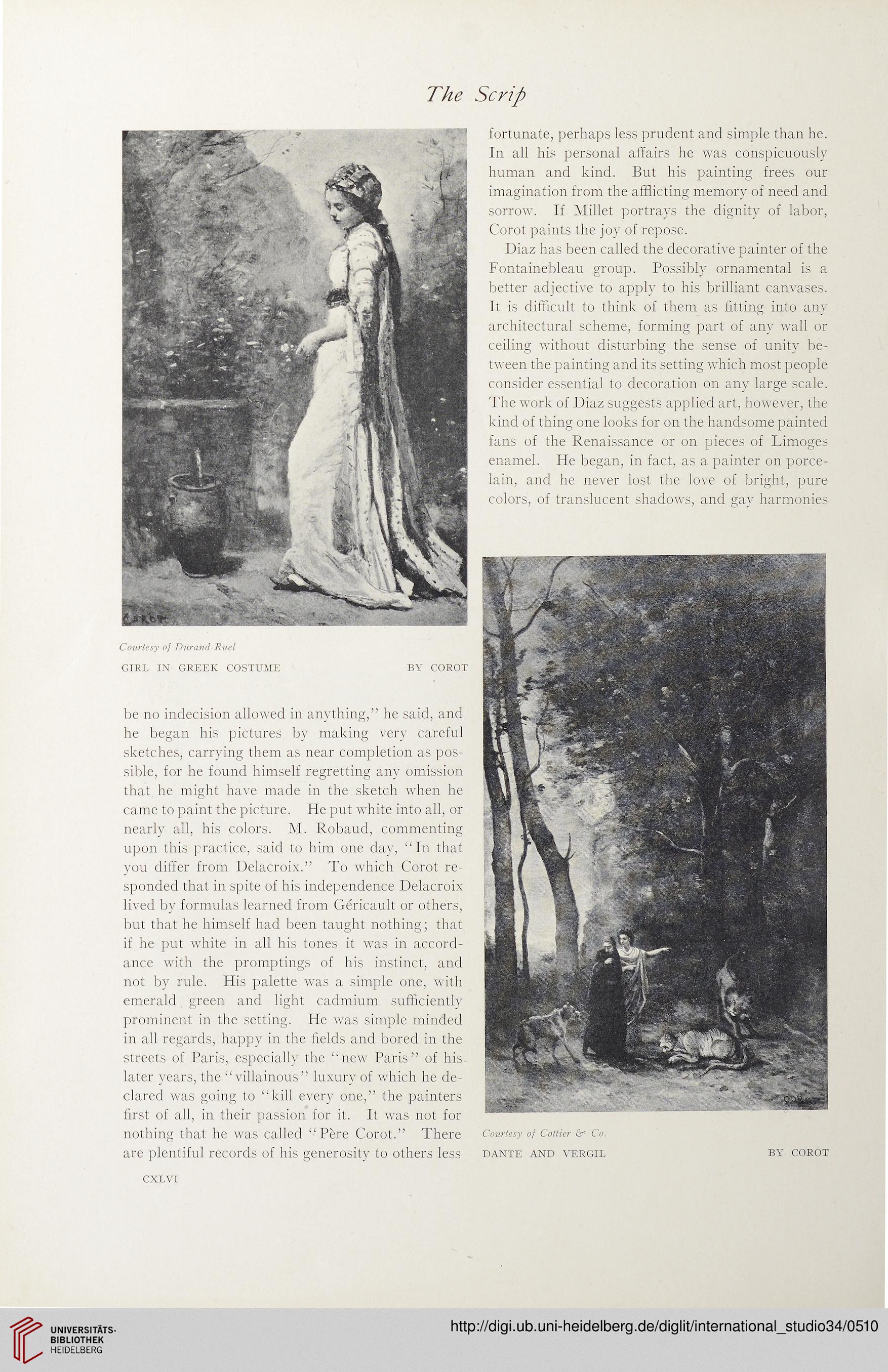The Scrip
fortunate, perhaps less prudent and simple than he.
In all his personal affairs he was conspicuously
human and kind. But his painting frees our
imagination from the afflicting memory of need and
sorrow. If Millet portrays the dignity of labor,
Corot paints the joy of repose.
Diaz has been called the decorative painter of the
Fontainebleau group. Possibly ornamental is a
better adjective to apply to his brilliant canvases.
It is difficult to think of them as fitting into any
architectural scheme, forming part of any wall or
ceiling without disturbing the sense of unity be-
tween the painting and its setting which most people
consider essential to decoration on any large scale.
The work of Diaz suggests applied art, however, the
kind of thing one looks for on the handsome painted
fans of the Renaissance or on pieces of Limoges
enamel. He began, in fact, as a painter on porce-
lain, and he never lost the love of bright, pure
colors, of translucent shadows, and gay harmonies
Courtesy oj Durand-Ruel
GIRL IN GREEK COSTUME BY COROT
be no indecision allowed in anything,” he said, and
he began his pictures by making very careful
sketches, carrying them as near completion as pos-
sible, for he found himself regretting any omission
that he might have made in the sketch when he
came to paint the picture. He put white into all, or
nearly all, his colors. M. Robaud, commenting
upon this practice, said to him one day, “In that
you differ from Delacroix.” To which Corot re-
sponded that in spite of his independence Delacroix
lived by formulas learned from Gericault or others,
but that he himself had been taught nothing; that
if he put white in all his tones it was in accord-
ance with the promptings of his instinct, and
not by rule. His palette was a simple one, with
emerald green and light cadmium sufficiently
prominent in the setting. He was simple minded
in all regards, happy in the fields and bored in the
streets of Paris, especially the “new Paris” of his
later years, the “villainous” luxury of which he de-
clared was going to “kill every one,” the painters
first of all, in their passion for it. It was not for
nothing that he was called “Pere Corot.” There
are plentiful records of his generosity to others less
Courtesy oj Collier & Co.
DANTE AND VERGIL BY COROT
CXLVI





